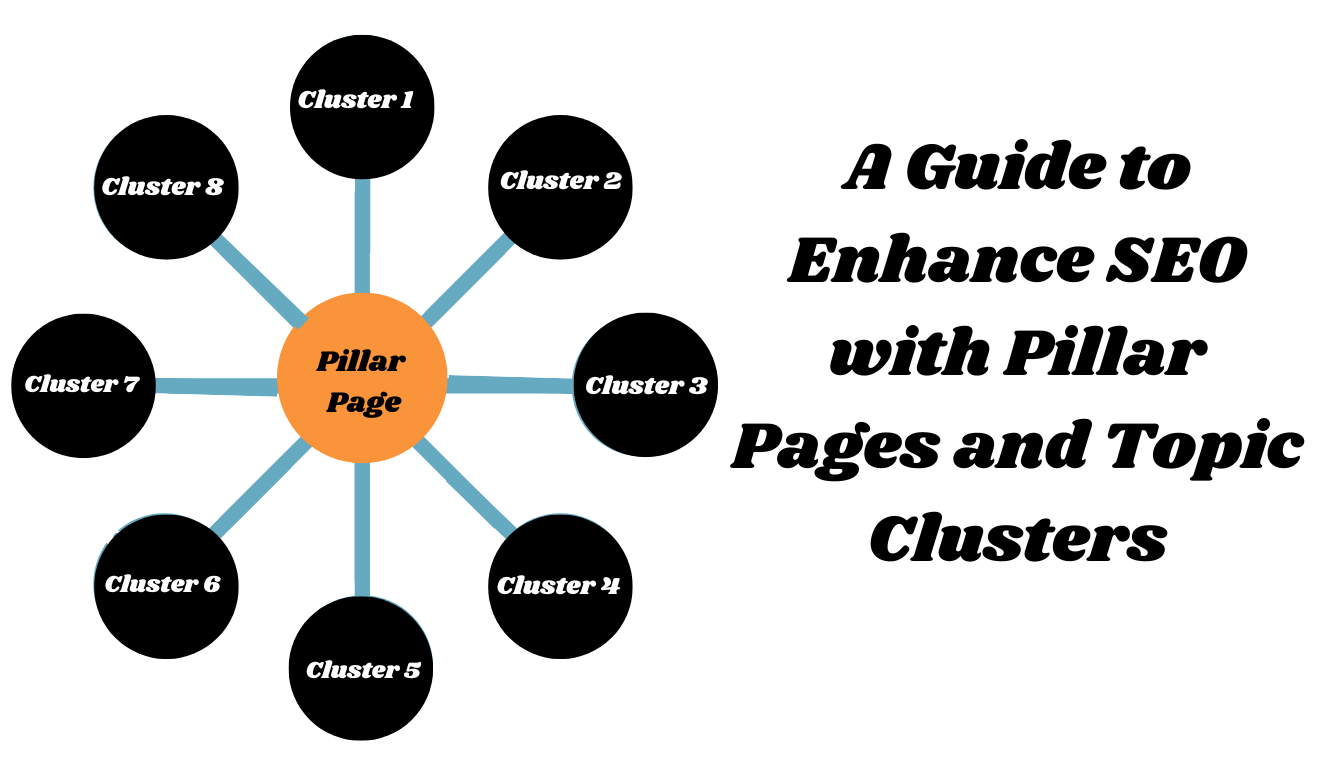In today’s rapidly changing digital landscape, search engine algorithms are continuously evolving to provide users with more relevant and comprehensive search results. This constant evolution demands that marketers adapt their strategies to remain visible and effective. One of the most effective adaptations in recent years has been the strategic use of topic clusters and pillar pages. These techniques not only align with the sophisticated criteria of modern search algorithms but also enhance the user experience by organizing content in a more cohesive and accessible structure.
The primary focus of your content marketing plan is a pillar page. It provides a comprehensive overview of a broad topic and links to more detailed subtopics, allowing for thorough coverage. By focusing on competitive, high-volume keywords, this strategy generates a lot of traffic and increases domain authority.
The SEO Benefits of Pillar Pages
- Enhanced Site Structure: By serving as the foundation for topic clusters, Pillar Pages help organize content in a logical structure that is easier for search engines to crawl and index.
- Increased Engagement: Comprehensive content encourages longer page visits, reducing bounce rates and increasing the likelihood of conversions.
- Authority Building: As a central hub of information, a well-crafted content can establish your site as an authority on particular topics, which is crucial for SEO and user trust.
The Power of Topic Clusters
Topic Clusters complement Pillar Pages by focusing on related, narrower topics that provide detailed answers to specific questions. Each cluster content page links back to the main Page and to each other, creating a tightly-knit structure that enhances the visibility of all included pages.
Advantages of Topic Clusters in SEO
- Keyword Coverage: Topic Clusters allow you to cover multiple aspects of a broad topic, capturing a variety of keywords that might not be included in the Pillar Page.
- Boost in SERP Rankings: The interlinking of related content can enhance search rankings as it signals to search engines the breadth and depth of your site's content.
- User Pathways: By guiding users through related topics, Topic Clusters enhance the navigability of your site, improving overall user satisfaction.
Developing Effective Pillar Pages and Topic Clusters
Creating performing Pillar Pages and Topic Clusters involves strategic planning and execution. Below is a detailed roadmap to guide you through the process.
Step 1: Strategic Topic Selection
Choose a broad theme that aligns with your business objectives and has sufficient content potential. This theme should be broad enough to write extensively about and have various subtopics that your target audience searches for.
For example: If you are a digital marketing agency you can choose Email Marketing as your pillar topic—it’s broad, aligns with business goals, and has many subtopics.
Step 2: Detailed Keyword Research
Conduct thorough keyword research to identify both primary keywords for the Pillar Page and secondary keywords for the cluster pages. Tools like Ahrefs or SEMrush can provide insights into search volumes, keyword difficulty, and related semantic keywords.
For example: For a topic like ‘Email marketing’, your keywords can be:
- Primary Keyword: "Email Marketing Strategies, Email Marketing Tools, "
- Secondary Keywords: "email automation tools," "email subject lines," "list segmentation."
Step 3: Content Creation for Pillar Pages
Write a comprehensive, authoritative content that provides a high-level overview of the topic. This page should:
- Be well-researched, citing credible sources and industry experts.
- Include mixed media such as images, charts, and videos to enhance engagement.
- Cover all fundamental aspects of the topic to ensure it is the ultimate resource.
For Example: If we are taking email marketing as a main topic then create a pillar page covering email marketing basics, types, tools, and best practices. Add visuals like infographics and videos.
Check our blog on interactive content in boosting engagement
Step 4: Building Topic Clusters
Develop detailed cluster content that addresses specific questions or subtopics related to the main Pillar Page. Each piece of cluster content should:
- Focus on providing deep insights into its specific topic.
- Include calls to action that link back to the Pillar Page or to relevant conversion pages.
- Be optimized for SEO with appropriate meta tags, headings, and keyword-rich content.
For Example: Write cluster content on subtopics like:
- "How to Write Email Subject Lines"
- "Best Email Automation Tools"
- "Email List Segmentation Tips for B2B marketing"
Step 5: Internal Linking Strategy
Implement a robust internal linking strategy to connect your Pillar Page with all associated cluster content. This network of links boosts SEO by showing search engines the hierarchical structure of your site and helps users navigate between related topics effortlessly. This will also help search engine bots to go to all pages within the cluster.
For Example: Link the pillar page to cluster pages and vice versa. Use anchor text like:
- "Learn email marketing strategies here."
- "Discover the best automation tools."
Step 6: Continuous Monitoring and Optimization
Use web analytics tools to monitor the performance of your Pillar Pages and Topic Clusters. Look for metrics like page views, average time on page, bounce rates, and conversions. Regularly update the content to keep it fresh and relevant, which is vital for maintaining SEO rankings and user interest.
Conclusion
Pillar Pages and Topic Clusters are not just SEO techniques; they are transformative strategies for content organization and user engagement. You can significantly enhance the user experience, authority, and visibility of your website by implementing these strategies. Start planning your strategy today to establish your website as a leading authority in your industry and reach to the top of search engine results pages.


